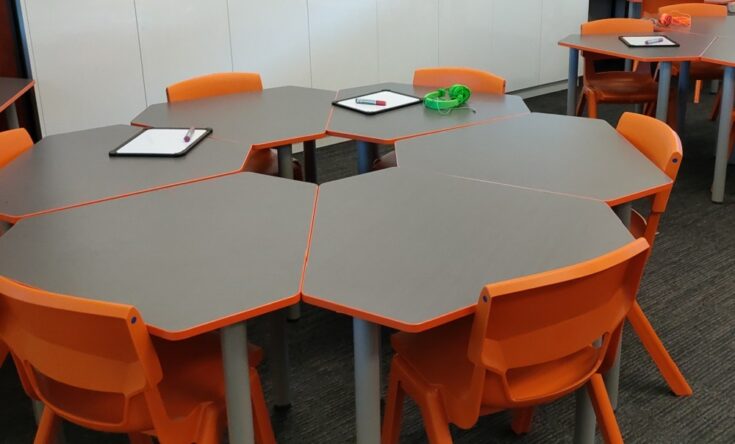According to data from the 2021 STEM Equity Monitor, only 23% of the 2021 Information Technology research and teaching workforce was female*. To contribute to more opportunities and supported pathways into STEM, we need to investigate ways to improve female engagement with digital technologies at school.
The Australian Council for Educational Research (ACER) is conducting a research study for CSIRO looking into the factors that help or stop young female students participating in digital technologies education.
The research study includes 2 stages. Stage 1 has been completed and included a review of key research, policy and programs. Stage 2 is still ongoing and will end in Term 1 of 2023. It includes an online survey for STEM teachers nationwide, interviews with tertiary educators in the field and some school-based research conducted across several states in Australia. The findings will be useful for teachers, parents and policymakers.
Our online survey seeks responses from STEM teachers to get their perspective on some of the barriers and facilitators to young female students’ participation in digital technologies programs. These responses will help CSIRO to better understand how to support young females’ engagement with digital technologies in their education and outreach initiatives.
What does the research say?
As part of the research study, our team investigated key research, policy and programs focused on factors associated with female students’ engagement with digital technologies and STEM. We found that there are 3 factors connected to increasing engagement in digital technologies. They are:
- Engaging parents. Research shows that parent concerns over cyber safety can limit the amount of encouragement and access to digital technology they give to their children, particularly for young females (UNDP, 2021). Giving parents the skills and confidence to support their children’s access to digital technology in the home is important. The eSafety Commissioner resources on cyber safety and digital technology use are a useful place to refer parents to help them support their children. Successful international programs that increase young female students’ engagement with digital technology, such as the Digital Youth Divas program, ensure that parents are learning partners in their children’s digital technology education.
- Ensuring there is engaging content and contexts. Research shows that team-based work and engaging contexts are crucial for ensuring student engagement in digital technology tasks. Using real-world issues, non-traditional contexts, and visually appealing content is important for increasing engagement in digital technology tasks for all students (Hubwieser et al, 2016). Engaging with students to find out their working style preferences (individual or group), their interests, whether they prefer abstract or real-life examples, and the factors that make a task more visually exciting for them, will support the development and implementation of engaging digital technology tasks in the classroom.
- Stopping stereotypes and stigma. Stereotypes and stigma around girls and gaming can influence female students’ engaging in digital technology programs. Social stigma against females playing video games, or computing being a ‘boys’ activity’ may prevent some students, parents or even teachers from seeing digital technology as being of educational benefit to female students (Accenture, 2016; Gil-Juárez et al., 2018, West et al., 2019). The media and film industry reinforce this stereotype (Accenture, 2016), with male actors portraying computer scientists and engineers in family films at a ratio of 14 to 1. Identifying whether these stereotypes are endorsed by students and, if they are, challenging these stereotypes in the classroom is vital for improving young female students’ engagement with digital technology and STEM.
Resources for teachers and students
To improve the engagement of all students in digital technologies, the CSIRO Digital Careers team have developed activities and resources to enhance and extend students’ computational thinking skills as well as develop teamwork skills, critical and creative thinking, and problem solving.
By working with a range of industry and government partners, CSIRO have been running the CyberTaipan, Microsoft FarmBeats and Bebras programs with primary and secondary students throughout Australia. These resources developed by the CSIRO team are aligned with the Australian Curriculum, and the learning experiences and challenges are designed to enrich students’ understanding of digital technologies.
Lisa Walker, Principal Advisor, Impact & Evaluation for CSIRO’s Education and Outreach area, says, ‘Digital technology is vital to Australia’s future, and to drive innovation it’s important to have a diverse future technology workforce. That’s why CSIRO Education & Outreach is focused on understanding the factors influencing the participation of young women in digital technology subjects at school and university.’
If you would like to contribute to this important work, you can complete our online survey until the end of 2022.
*‘female’ includes those who are cisgender, transgender, non-binary, and intersex persons who identify as female
References
Accenture. (2016). Cracking the Gender Code: Get 3x More Women in Computing. Dublin, Accenture. Retrieved from https://www.accenture.com/us-en/about/inclusion-diversity/cracking-gender-code
Gil-Juárez, A., Feliu, J. and Vitores, A. (2018). Mutable technology, immutable gender: Qualifying the ‘co-construction of gender and technology’ approach. Women’s Studies International Forum, Vol. 66, pp. 56–62. https://doi.org/10.1016/j.wsif.2017.11.014
Hubwieser, P., Hubwieser, E., & Graswald, D. (2016). How to attract the girls: Gender-specific performance and motivation in the Bebras challenge. International Conference on Informatics in Schools: Situation, Evolution, and Perspectives (pp. 40-52). Springer, Cham. https://link.springer.com/chapter/10.1007/978-3-319-46747-4_4
United Nations Development Program (UNDP). (December 9, 2021). Toward an equitable digital future: women and girls as active agents of change in digitalisation. https://www.undp.org/digital/blog/toward-equitable-digital-future-women-and-girls-active-agents-change-digitalisation
West, M., Kraut, R., & Chew, H. E. (2019). I'd blush if I could: closing gender divides in digital skills through education. UNESCO. https://unesdoc.unesco.org/ark:/48223/pf0000367416
Consider the 3 factors outlined by Kristy Osborne and Sarah Buckley in this article (engaging parents, ensuring there is engaging content and contexts and stopping stereotypes and stigmas) while reflecting on your school context.
Is your school prioritising these 3 factors? Can you identify any areas of improvement for the new school year? If you are meeting one or 2 factors, is there space next term to focus on a new area? How will you measure its success?



